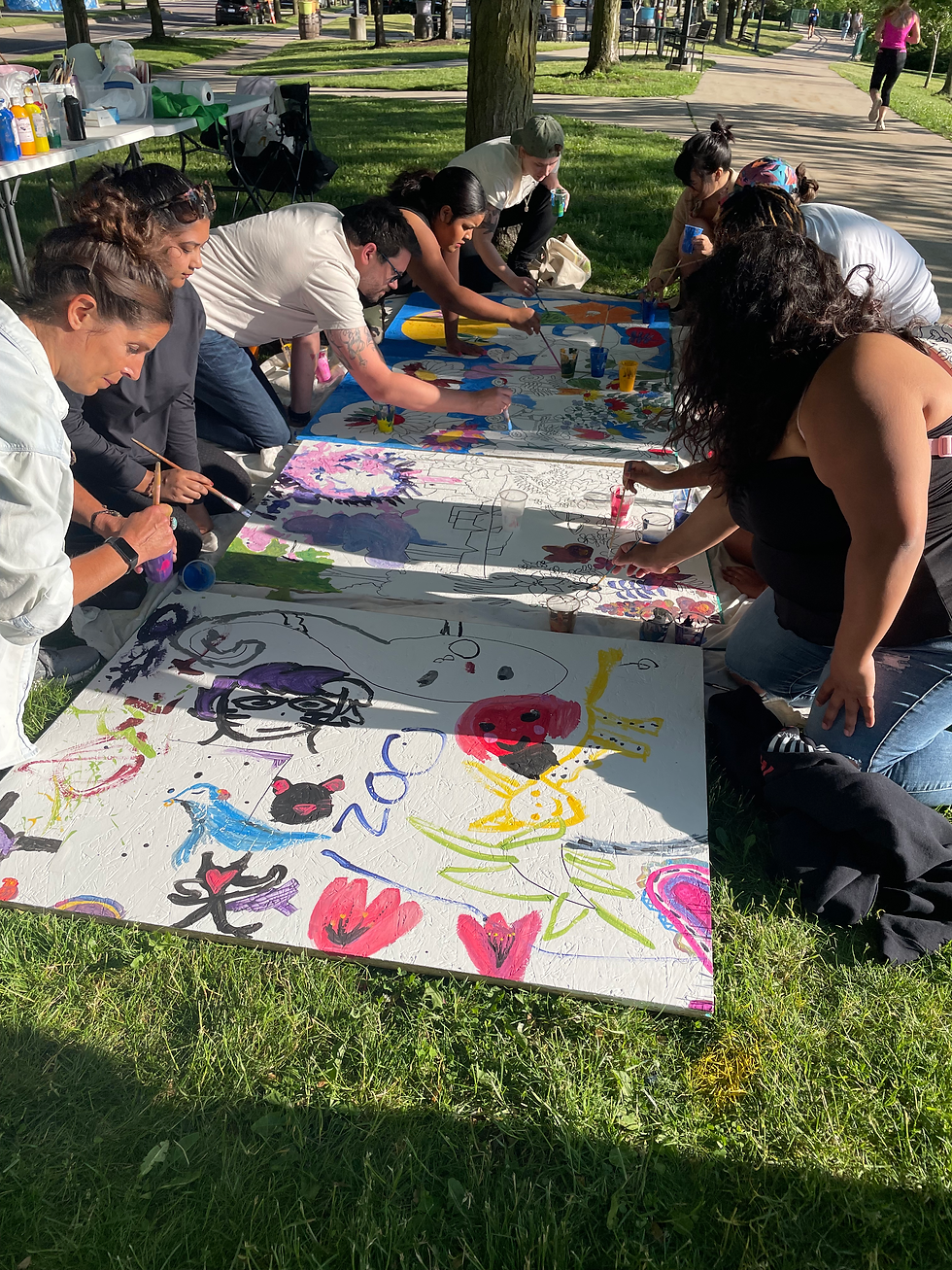Collaboration as a Practice in the Arts
- Mallory Shotwell
- Jan 10
- 3 min read

Collaboration is more than just a way to work—it’s a way to live. In the arts, collaboration fosters connection, trust, and shared creativity. It asks us to set aside competition, ego, and the illusion of self-sufficiency to build something that reflects not just one perspective, but many. At its core, collaboration is about relationships: between people, between ideas, and between visions of what’s possible when we work together.
The writer adrienne maree brown captures this beautifully: “What we practice at the small scale sets the patterns for the whole system.” This insight speaks to the heart of collaboration. The way we interact within our partnerships, communities, and creative ecosystems doesn’t just shape the immediate outcomes—it creates ripple effects that influence the broader arts landscape.
What Collaboration Teaches Us
Collaboration is about practicing care, openness, and generosity on a small scale—within a project, a relationship, or a single conversation. It asks us to pay attention to the patterns we create in our work with others. Are we centering equity, trust, and respect? Are we fostering spaces where everyone feels empowered to contribute? Or are we replicating systems of hierarchy, competition, or exclusion?
When we collaborate well, we model what the arts could be: a system that values abundance over scarcity, relationships over transactions, and shared success over individual recognition. But this is not always easy. Collaboration requires patience, humility, and a willingness to let go of control. It means embracing discomfort and trusting that the process will lead to something greater than what we could achieve alone.
Collaboration with Partners
In practice, collaboration begins with relationships—particularly with partners who bring their own strengths and perspectives to the table. These partnerships thrive when they’re rooted in mutual respect and shared values, not just convenience or necessity.
Take adrienne maree brown’s idea further: the way we approach these partnerships determines the patterns that shape larger systems. If we approach partnerships with transparency and generosity, we create a model of collaboration that others can emulate. If, instead, we treat collaboration as a tool for self-gain or recognition, we replicate the competitive structures that often limit the arts.
For example, when working with a partner organization, it’s not enough to align on goals. True collaboration means listening to their needs, understanding their priorities, and finding ways to build something that uplifts everyone involved. It means recognizing that our collective success is tied to how we treat each other on the smallest scale.
Collaboration Within Communities
Collaboration with communities is even more nuanced. It’s not about stepping in as a leader with a pre-determined vision. It’s about co-creating with the people who will experience the work firsthand. This type of collaboration requires humility—it asks us to listen, to adapt, and to honor the lived experiences of others.
adrienne maree brown’s quote reminds us that these small interactions matter. When we collaborate with care, we show communities that their voices are valued and their contributions meaningful. This sets a pattern for a larger, more inclusive system—one where communities are not just audiences or participants but equal partners in the creative process.
Collaboration Over Competition
Collaboration isn’t just a way to work—it’s an antidote to the competition that so often dominates the arts. Scarcity mindsets tell us there isn’t enough space, funding, or recognition to go around. Collaboration challenges that, showing us that when we build together, we build stronger.
But collaboration requires vulnerability. It means admitting when we need help, celebrating others’ successes, and believing that shared effort benefits everyone. When we approach collaboration with adrienne maree brown’s perspective in mind, we see that how we treat one another today shapes the possibilities for tomorrow.
If we practice abundance and care in the small moments—sharing resources, amplifying each other’s voices, and creating equitable opportunities—we create a culture where everyone can thrive.
Why Collaboration Matters
Collaboration isn’t just about achieving results—it’s about the relationships we build along the way. It’s about practicing trust, care, and connection on a small scale, knowing that these patterns ripple outward.
adrienne maree brown reminds us that what we practice at the small scale sets the patterns for the whole system. In the arts, this means recognizing that every relationship, every partnership, and every project is an opportunity to model the future we want to see. It’s about rejecting scarcity, embracing abundance, and building systems that honor the collective power of creativity.
At its best, collaboration reminds us that we’re not in this alone. It teaches us that the most meaningful work comes not from individual effort, but from the connections we foster with one another.
_______________________________________
brown, adrienne maree. Emergent Strategy: Shaping Change, Changing Worlds. AK Press, 2017.




Comments